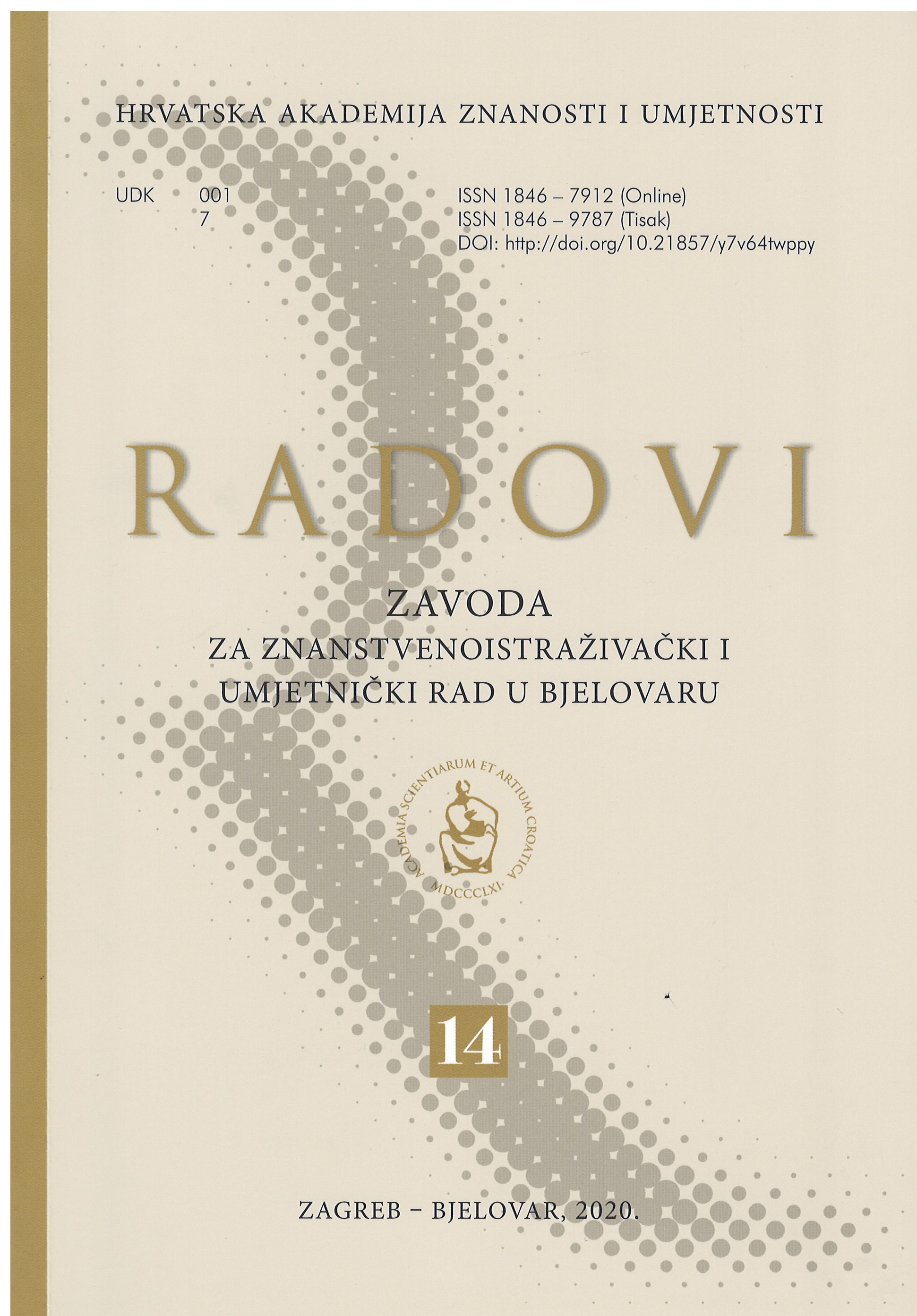Demografska kretanja u gradovima Bjelovar, Čazma, Daruvar, Garešnica i Grubišno Polje
Demographic Movements in Bjelovar, Čazma, Daruvar, Garešnica and Grubišno Polje
Author(s): Dragutin Feletar, Petar FeletarSubject(s): Demography and human biology, Rural and urban sociology
Published by: Hrvatska akademija znanosti i umjetnosti - Zavod za znanstvenoistraživački i umjetnički rad u Bjelovaru
Keywords: demographic movements; mortality; birth rate; new demographic policy; natural growth; depopulation processes; age structure;
Summary/Abstract: The paper analyses quantitative and qualitative features of the population of five towns in the Bjelovar-Bilogora County, with the predicted number of inhabitants by 2051. It presents the movement in the number of inhabitants in the period 1857–2016, stressing the depopulation processes in the last five decades. Thanks to the industrialisation and deruralisation processes, up to the year 1991, there had been an intensive increase in the number of inhabitants of Bjelovar and Daruvar, while the number of inhabitants in Čazma, Garešnica and Grubišno Polje began decreasing as soon as at the time of the first census following World War Two. Over the last fifty years, the spatial image of the presence of population in the County changed significantly. In comparison with the Croatian average, depopulation processes in rural areas in this area were more intensive. This was confirmed by the analysis of the natural movement of population. As early as in the 1970s, not only all the municipalities, but also urban settlements of the Country entered the post-transitional demographic phase, which was characterised by negative differences between the birth and the death rates, as well as by a negative migration balance. These were the main causes of a nearly dramatic depopulation having taken place in the vast majority of settlements in the County. Furthermore, the aggravation of the age structure of population is directly connected with the aforementioned movements. There is a decrease in the percentage of the young population, whilst the contingent of the old population is in constant increase. The schooling (educational) structure of the population is becoming increasingly favourable, which – in a certain sense – increases the mobility, i.e. stimulates the negative migration balance. If the current trends of population movement (present for the last two decades) are projected into 2051, the number of inhabitants of Bjelovar will – around the mid-21st century – decrease by approximately 25 %, of Čazma by 47 %, of Daruvar by 54 %, of Garešnica by around 63 %, and of Grubišno Polje by nearly 80 %. This is more than likely to initiate extremely negative movements within population aging processes and other qualitative features, accompanied by dramatic demographic vacation of rural areas. Demographic movements of this kind oughtto present the final alarm for the entire society to create and implement a new, long-term demographic and developmental policy.
Journal: Radovi Zavoda za znanstvenoistraživački i umjetnički rad u Bjelovaru
- Issue Year: 2020
- Issue No: 14
- Page Range: 211-251
- Page Count: 41
- Language: Croatian

